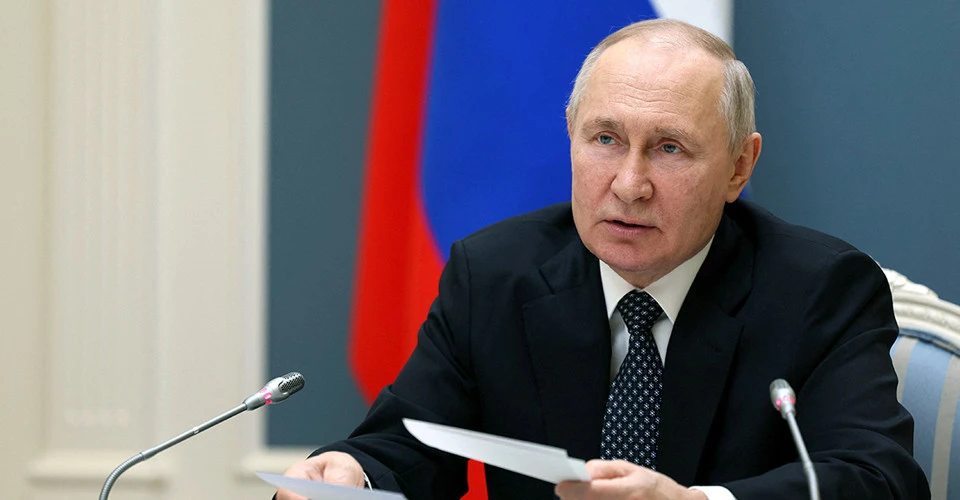
Russia proposed peace deal to Ukraine just 11 days after invasion, suggesting terms akin to capitulation
The outlet Radio Liberty has obtained a draft agreement that Moscow proposed to Ukraine in the early days of the full-scale invasion in 2022
The draft, titled “Agreement on the Settlement of the Situation in Ukraine and the Neutrality of Ukraine,” is dated March 7, 2022, just 11 days after Russia launched its full-scale invasion and a week after negotiations between Ukraine and Russia began.
This Kremlin-drafted agreement was presented to the Ukrainian delegation during the third round of talks in Belovezhskaya Pushcha, Belarus.
It is the first known document outlining Russia's terms for a peace deal since the start of the full-scale invasion.
The agreement proposed by Russia sheds light on President Vladimir Putin's goals regarding the full-scale invasion of Ukraine, goals he has not publicly renounced and has repeatedly stated his intention to achieve.
Had the Ukrainian government accepted these terms, it would have effectively turned Ukraine into a puppet state with a facade of neutrality. This would mean a diminished military, no protection from NATO countries, no chance to regain control over Crimea or Donbas, and a requirement to recognize the independence of the so-called Donetsk and Luhansk People’s Republics as well as large areas still under Kyiv's control at that time.
Radio Liberty obtained the draft from a Ukrainian source familiar with the negotiations, while a Russian source close to the talks confirmed its authenticity. Both sources spoke on the condition of anonymity due to the sensitive nature of the discussions.
The March 2022 document consists of six pages outlining the main agreement and four pages of annexes. It includes eighteen articles addressing various topics: the parameters of Ukraine's neutrality (including military and international obligations), border issues, humanitarian concerns (such as language, religion, and history), and the lifting of sanctions against Russia.
- The project proposed that Ukraine reduce its army to 50,000 troops, including just 1,500 officers — five times fewer than it had in 2022. If this had happened, Ukraine would have been left with only four ships, 55 helicopters, and 300 tanks, which was less than the military of neighboring Belarus at that time.
- Ukraine was asked not to develop or deploy any missiles with a range over 250 km, which is the distance from the Crimean bridge to Huliaipole, a city under Ukrainian control near the front line. Russia also wanted the right to ban any future weapons developed by Ukraine through scientific research.
- The agreement required Ukraine to recognize the independence of the so-called Donetsk and Luhansk Republics, even though Russia controlled only parts of these regions by February 24, 2022, and still has not fully taken them over as of late 2024. The document suggested that Ukraine should cover the costs of rebuilding infrastructure in Donbas that had been allegedly destroyed since 2014.
- Additionally, Russia demanded the lifting of all sanctions against it and the withdrawal of international lawsuits filed since 2014. It insisted that Russian be made an official language in Ukraine and that the Ukrainian Orthodox Church (Moscow Patriarchate) have all its property rights restored.
- Finally, the draft called for the repeal of bans on symbols associated with the victory over Nazism, effectively legalizing Soviet and communist symbols in Ukraine again. It included a list of Ukrainian laws that the authors labeled as examples of “Nazification,” including those related to the commemoration of victories over Nazism and the rehabilitation of victims of the communist regime.
- Overall, this agreement would have left Ukraine very vulnerable, with Russian troops still in place, limiting Kyiv's ability to defend itself or seek support from the West, while also forcing it to bear the costs of restoring Donbas.
- News













































